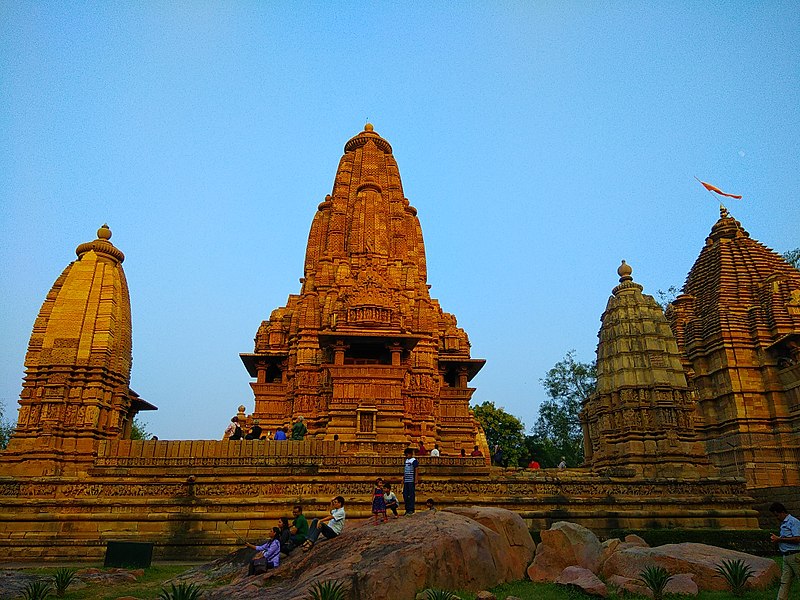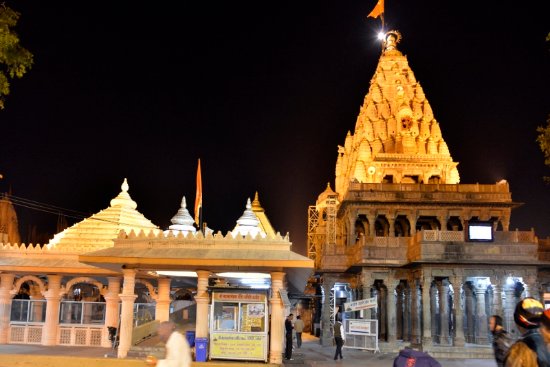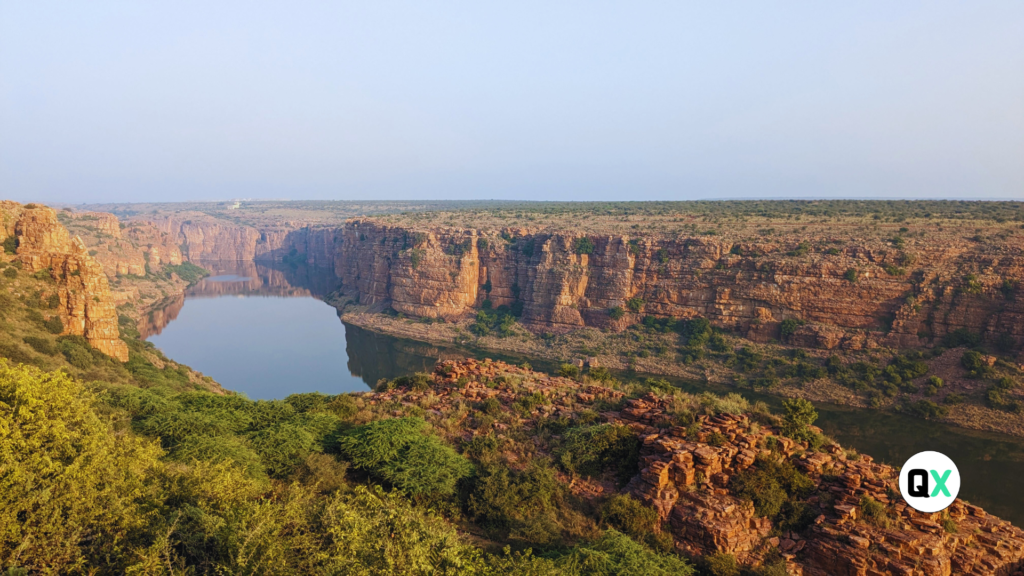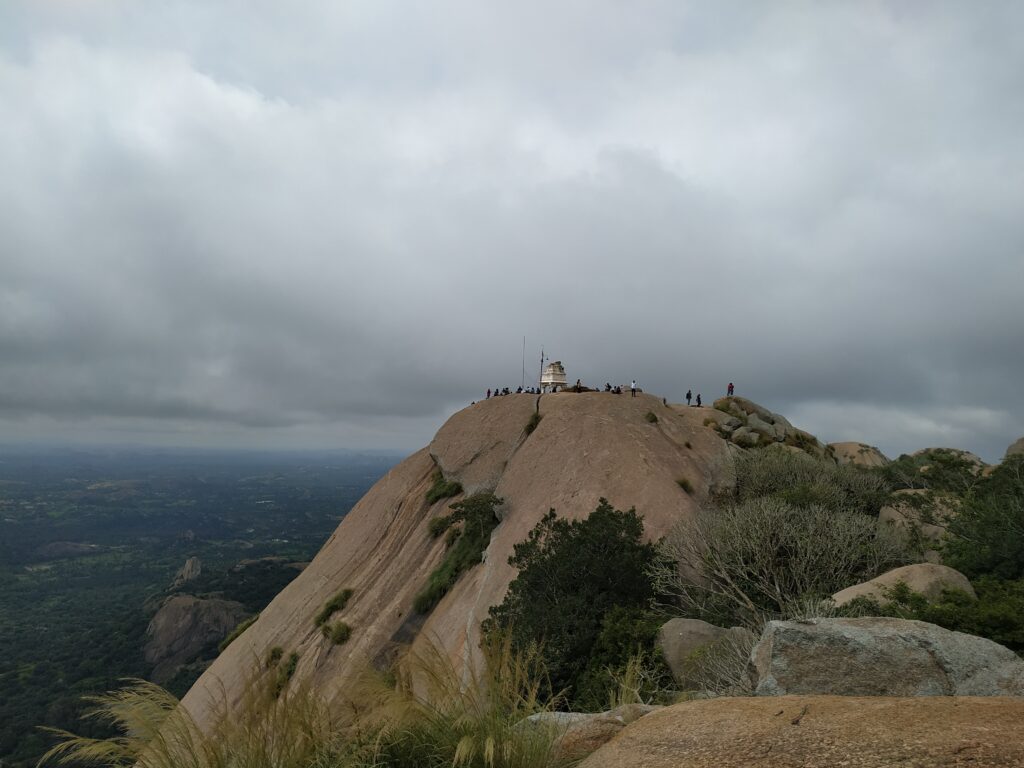Khajuraho is one of the most famous historical sites in India. It is a UNESCO world heritage site that you cannot miss out on! Not only does the group of temples in Khajuraho have great architectural significance, but the rock carvings depict eroticism which is quite surprising considering the time it was constructed. The temple was created over 200 years ago during the 10th to 12th century during the Chandela rule. But this blog is not about Khajuraho, it is about the places to visit near Khajuraho. Khajuraho is lucky to be in a location that is pretty close to some of the gorgeous spots in Madhya Pradesh. Whether you love adventure or you love nature or even if you are a spiritual person, you will find places to visit near Khajuraho that cater to all. If you are planning a trip to Madhya Pradesh, you should read the entire blog carefully to plan your trip accordingly.
15 Best Places To Visit In MP Near Khajuraho
The following areas are located quite close to Khajuraho. Take a look at these places to visit near Khajuraho that you ought to explore on your vacation!
1. Panna National Park – 50 Km from Khajuraho
Panna is the twenty-second Tiger Reserve of India and the fifth in Madhya Pradesh. The Reserve is situated in the Vindhyan Ranges and spreads over the Panna and Chattarpur districts in the north of the state. This land is characterized by extensive plateaus and gorges. It is a land of mesmerizing waterfalls, natural, and archaeological splendors, legends & cultural richness. It is also the land of the Ken River, which lends it unparalleled beauty.

CHARACTERISTICS OF THE AREA
- The major land of tigers is where about 25 to 30 tigers reside.
- Situated on the Vindhya Hills of North Madhya Pradesh.
- Brittle and variegated deciduous forests and scattered ravines and plateaus.
- Place of mesmerizing waterfalls.
- Magnificent scenic view and archaeological site.
- A land of legends and cultural richness.
- The land of the unmatched beautiful Ken River.
- The northern boundary of the natural extension of teak (Tactona gandis) trees.
- The safest place for tigers is north-central India.
2. Pandav Falls – 34 Km from Khajuraho
Pandav Falls is a perennial fall fed by a tributary of the river Ken in Madhya Pradesh. The falls cascade down from a height of about 30 meters into a heart-shaped pool. Surrounded by lush green forests, the falls are spectacular and accessed even during peak monsoon season. The serenity, purity, and mystic atmosphere of Pandav Falls attract both the locals and tourists. At the foot of the falls, there are some ancient caves overlooking a large pool of water. The Pandavas of the Mahabharata are believed to have spent a part of their exile here.
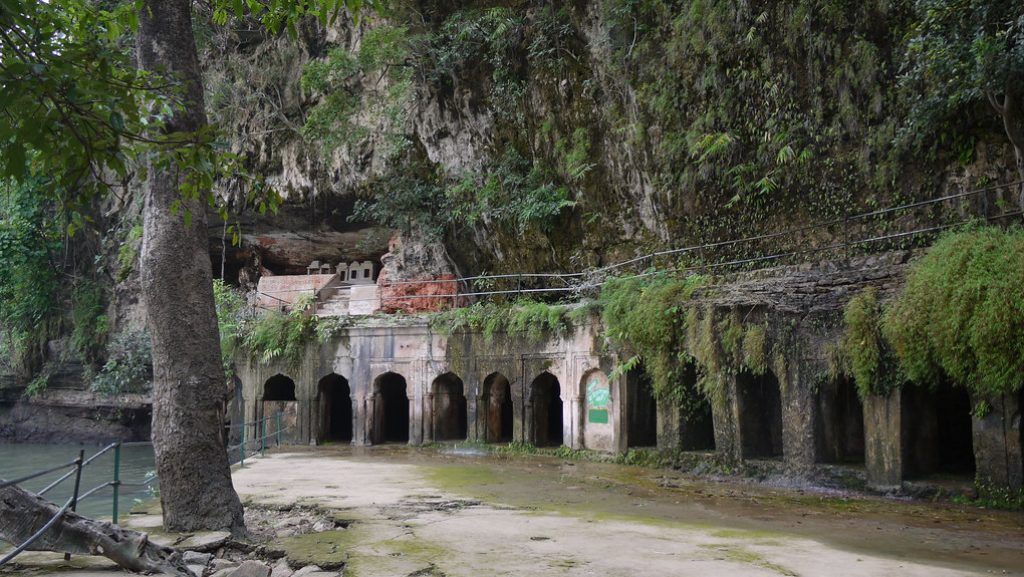
It is 34 km from Khajuraho and 14 km from Panna, the Pandav Falls is a serene waterfall located inside the Panna National Park in the Panna district of Madhya Pradesh. Located on Khajuraho – Panna Highway, Pandav Falls is one of the scenic waterfalls in Panna and also one of the top places for Khajuraho sightseeing.
BOOK HOTELS IN KHAJURAHO
3. Raneh Waterfalls – 21 Km from Khajuraho
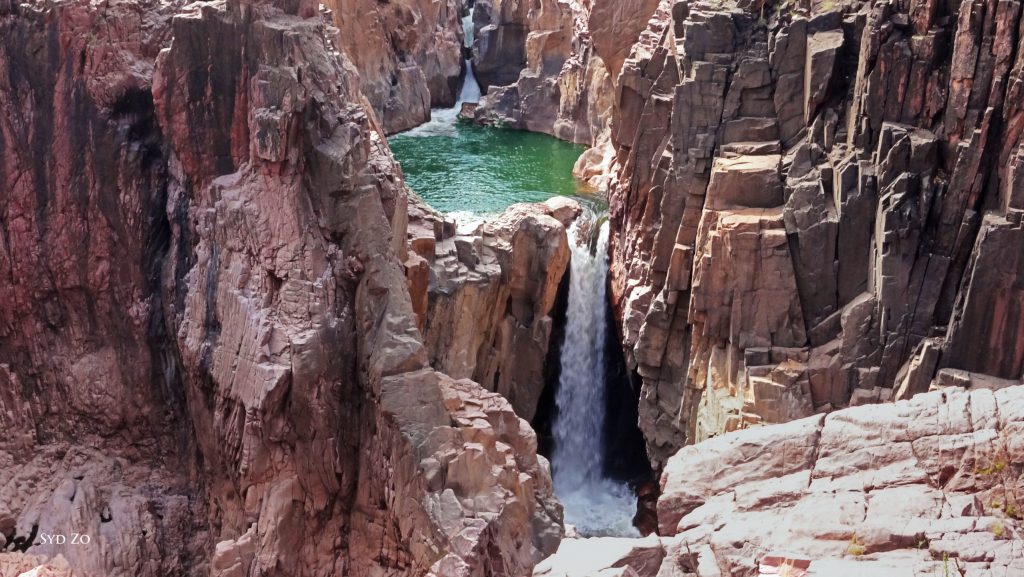
Raneh waterfall is a beautiful sight that is located only 21 km away from the Khajuraho bus stand. The Raneh Fall is a natural waterfall on the Ken River, located in Khajuraho. The Ken River forms a 5 km (3.1 mi) long, and 30 meters (98 ft) deep canyon made of pure crystalline granite in varying shades of colors ranging from pink and red to grey. There is a series of waterfalls in the canyon. The larger and smaller falls run all through the year. Other seasonal falls appear during monsoons.
4. Ken Gharial Sanctuary – 24 Km from Khajuraho
One of the most important tourist places in Khajuraho, the Ken Gharial Sanctuary is a favorite amongst tourists. Cradled in the Panna National Park area, the sanctuary is ideal for nature lovers and trekking enthusiasts all around. It falls into the route of the beautiful Ken River, which flows northwards to meet the Holy Ganges.
It is also home to the stunning Gharials, besides species like Wolf, Chinkara, Spotted Deer, Nilgai, and Sloth Bear.
5. Gangau Dam – 30 Km from Khajuraho
Gangau Dam is a huge structure built at the confluence of two rivers, namely the Simiri River and Ken River (a prominent river of Bundelkhand). This site is perfect for a picnic or a day out, where you can just relax and enjoy a few moments away from the humdrum of city life. The beauty and serenity of the place are two of the prime reasons, which make it a must-visit site in Khajuraho. Other than admiring beautiful views, you can also enjoy birdwatching at the dam. Varied species of migratory birds are often spotted here as the dam lies in proximity to the Panna National Park and Gangau Sanctuary.
6. Brihaspati Kund – 90 Km from Khajuraho

Brihaspati Kund(बृहस्पति कुण्ड) is a natural crater located in the Panna district of Madhya Pradesh, Bundelkhand. It is a popular tourist spot among locals.
7. Ajaygarh Fort – 80 Km from Khajuraho
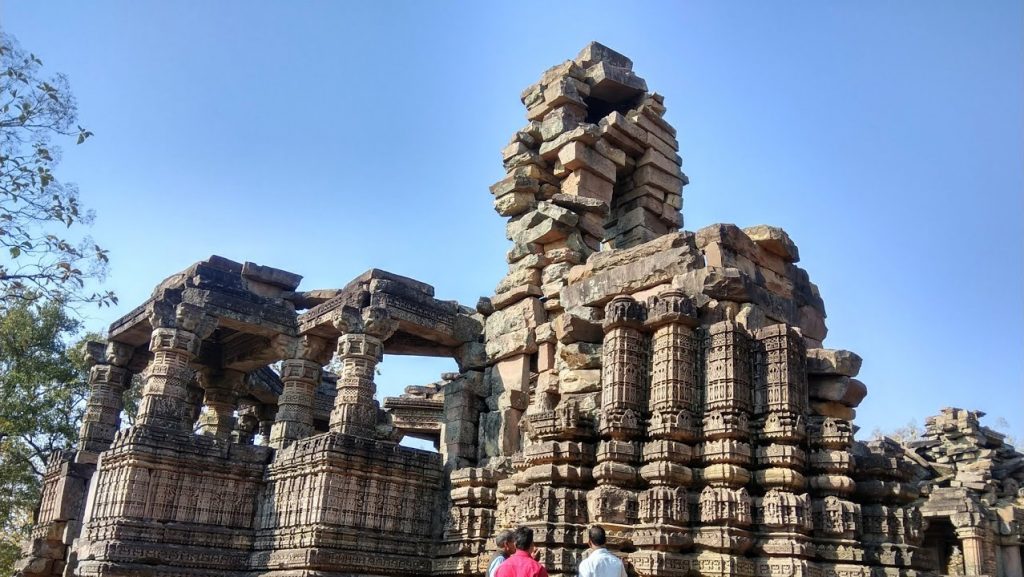
The fort of Ajaygarh is 80 km from Khajuraho. This fort was very important during the half period of Chandela rule. This fort is situated on the top of the Vindhya hills. The fort has two entrances. There is a gate in the north of the fort and a Tharauni gate in the southeast. It takes 45 minutes of steep rock climbing to reach the doors.
There is a lake named Ajay Palka Talav in the middle of the fort. The remains of Jain temples are scattered at the end of the lake. Some ancient temples established on the banks of the lake can also be seen. The main feature of the fort is three such temples which are decorated with arithmetic methods. The Archaeological Department of India has taken up the responsibility of taking care of this fort some time back. The fort of Ajaygarh, situated on the flat mountain of the Vindhyachal mountain range, remains a mystical and focal point of attraction for the people even today.
8. Kalinjar Fort – 100 Km from Khajuraho
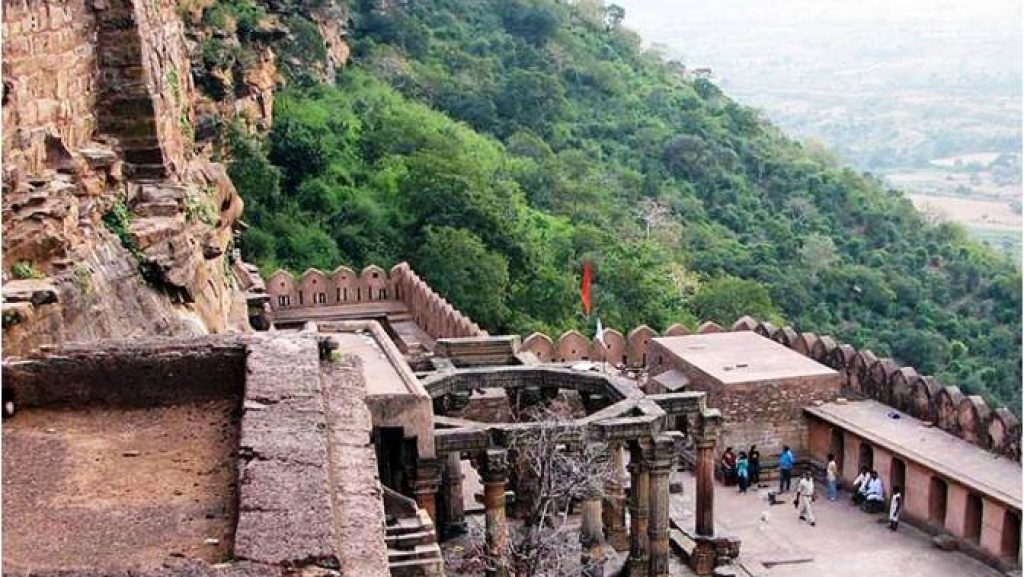
Kalinjar Fort Situated on top of a hill, this fort contains a treasure house of many monuments and idols. These things reveal various aspects of history. This fort built by the Chandelas is an example of the grand architecture of the reign of the Chandela dynasty. There are many buildings and temples inside this fort. This huge fort has grand palaces and canopies, which are finely designed and carved. The fort is believed to be the abode of the Hindu god Shiva. The fort also has a unique temple of Neelkanth Mahadev.
9. Shri Jugal Kishore Ji Temple – 45 Km from Khajuraho

Shri Jugal Kishore Ji Temple was built by Raja Hindupat Singh, the fourth Bundela King of Panna, during his reign from 1758 to 1778. According to the legends, the idol placed in the garbha griha of this temple has been brought from Brindavana through Orcha. The ornaments and attire of the lord reflect the Bundelkhand style. The temple has all the architectural features of Bundela temples including a nat mandapa, bhog mandapa, and a pradakshna path.
Mandir Timing Daily: Morning 5 AM, Morning 7 AM, Afternoon 12 PM, and Evening 7 PM
10. Shri Baldev Ji Temple – 45 Km from Khajuraho

Shri Baldevji Temple has been inspired by Roman architecture and has a gothic feel to it. The temple consists of a large hall called Maha Mandapa with massive pillars and is built on a raised platform so that one may obtain darshan even from outside the main gate.
Temple Timing Daily: Morning 5:30 AM, Morning 7:30 AM, and Evening 7:00 PM
11. Shri Prannath Ji Temple – 45 Km from Khajuraho

Mahamati Prannathji temple is an important pilgrimage of Pranamis and attracts a number of devotees during Sharada Purnima. It is believed that Mahamati Prannathji lived at the site for 11 years after which he took samadhi inside one of the domes of this temple. The temple was built in 1692 and has Muslim and Hindu architectural styles in its domes and lotus formations. The temple is divided into six parts namely Shri Gummatji, Shri Bangalaji, Shri Sadguru Mandir, Shri Baijurajji Mandir, Shri Chopada Mandir, and Shri Khijada Mandir.
12. Dhubela – 62 Km from Khajuraho
Dhubela was the first capital of Maharaja Chhatrasal, a ruler of the Bundela clan.
Maharaja Chhatrasal (4 May 1649 – 19 December 1731), was a medieval Indian warrior who fought against the Mughal Emperor Aurangzeb and established his own kingdom in Bundelkhand, becoming a Maharaja. Maharaja Chhatrasal Maqbara is one of those historical monuments of Chhatarpur that is actually the cenotaph of the Maharaja of Chhatrasal.
It is also an important monument from an architectural point of view. This beautiful example of Bundeli architecture was built by Baji Rao Peshawa (First) in memory of Maharaja Chhatrasal in 1736 A. D.
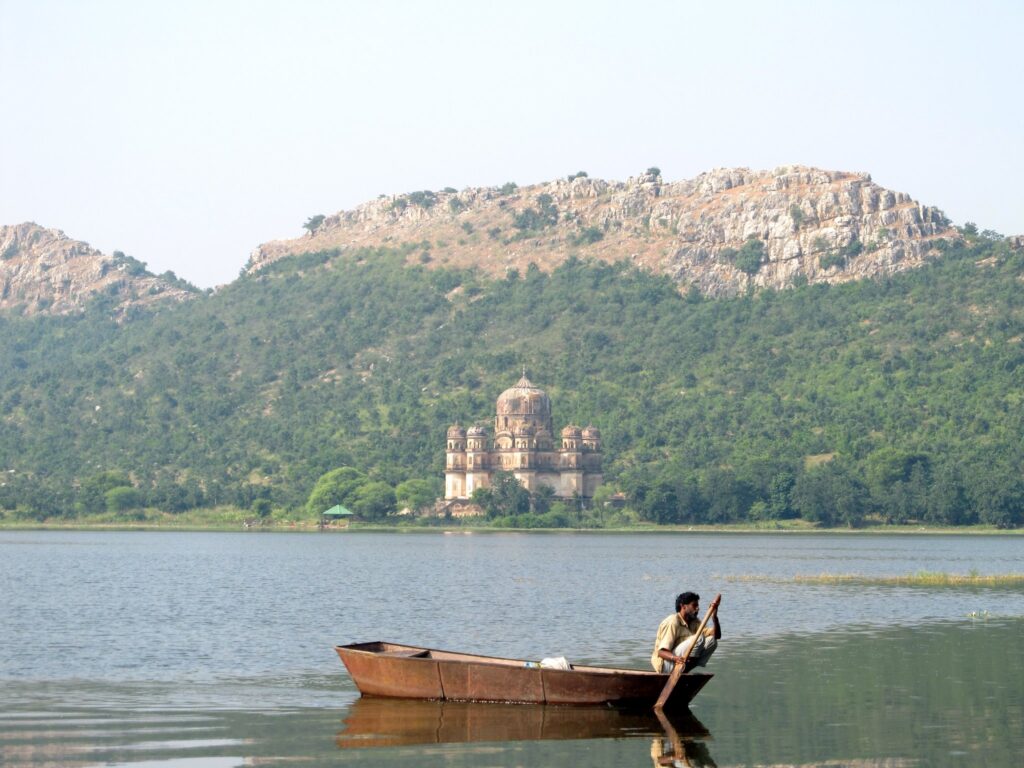
Monuments in Dhubela
1. Maharani Kamlapati Cenotaph. It is an octagonal structure situated on a high platform. Built-in the 17th century the monument is a fine example of the Bundeli style.
2. Sheetal Garhi was built in the 17th century during the period of Maharaja Chhatrasal, this famous monument exemplifies the rich Bundeli art. This fortress was built for residential purposes to escape the excessive heat in the peak of summer. Its interior is decorated with foliage patterns.
3. Mahoba Gate, built by Maharaja Chhatrasal in the 17th century the gate represents the rich Bundeli art. It was built to connect Mahoba and Mau Sahania. This huge entrance has two gates.
4. Shri Krishna pranami mandir is near Maharaja Chhatrasal Cenotaph.
13. Maharaja Chhatrasal Museum – 62 Km from Khajuraho
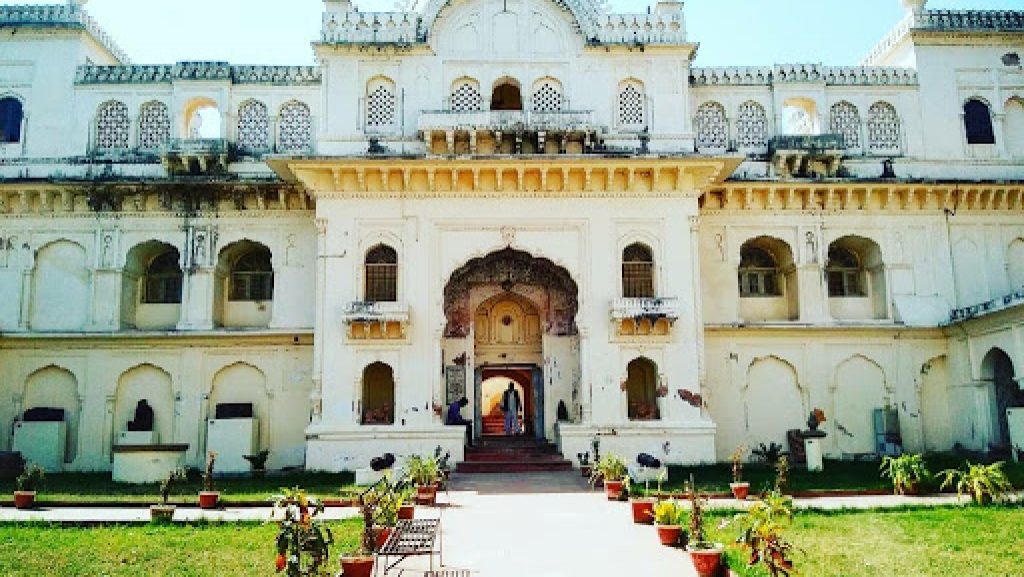
Maharaja Chhatrasal Museum is a museum located in an old palace at Dhubela, on the Chhatarpur-Jhansi highway, in Chhatarpur District, Madhya Pradesh, India. This museum was established in September 1955 in a palace built by Chhatrasal for his residence.
Maharaja Chhatrasal (4 May 1649 – 19 December 1731), was a medieval Indian warrior who fought against the Mughal Emperor Aurangzeb and established his own kingdom in Bundelkhand, becoming a Maharaja.
14. Jatashankar Dham Temple – 75 Km from Khajuraho
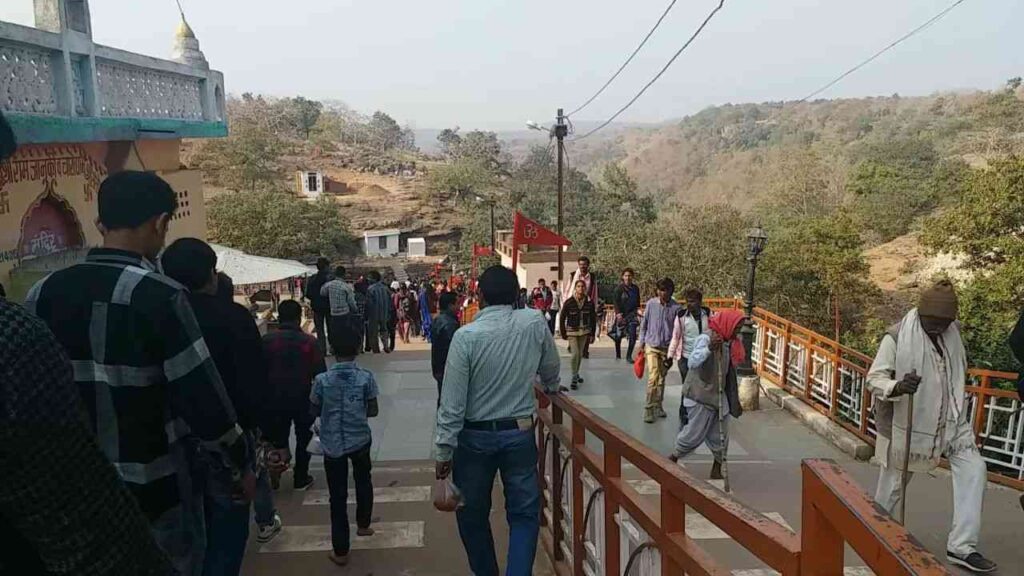
Jatashankar is a Temple and Hindu shrine located in tehsil Bijawar of District Chhatarpur, Madhya Pradesh, India. Jatashankar has running natural water from the mouth of a symbolic “Nandi”.
The place served as a shrine to the God Shiva and is a popular destination for pilgrims. Jata means hair and Shankar is another name for Lord Shiva. There are ponds fed by springs found in the locality, one of cold water and the other one of hot water.
15. Bhimkund – 95 Km from Khajuraho
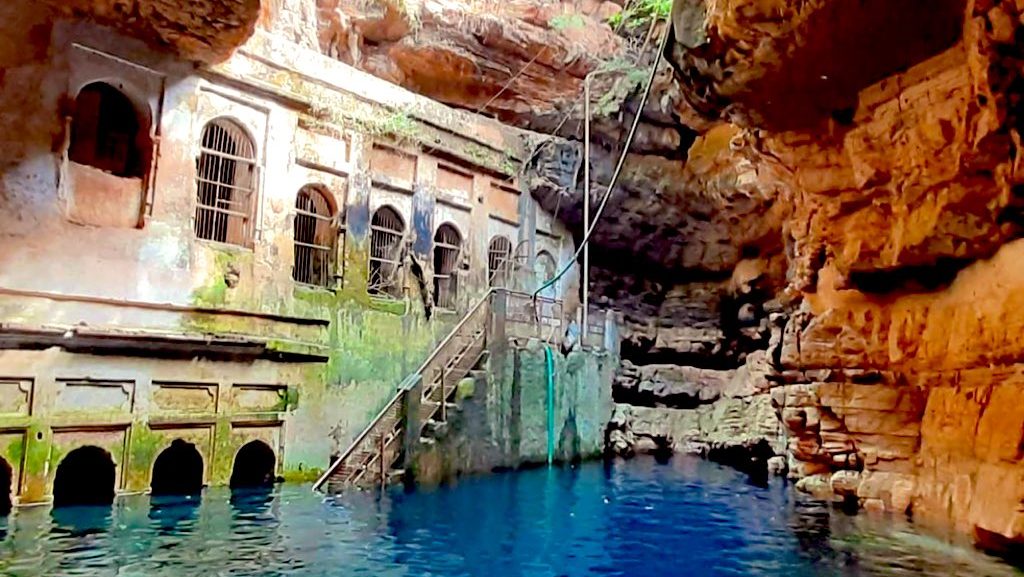
Bhimkund (also known as Neelkund) is a natural water tank and a holy place in Madhya Pradesh, India. It is located near Bajna village in Chhatarpur district, Madhya Pradesh. It is 77 km away from Chhatarpur by road in the Bundelkhand region.
Bhimkund is a natural water source and a holy place that dates from the era of the Mahabharata. The water of the Kund (tank) is so clean and transparent that one can clearly see fish swimming in the water. The Kund lies in a cave, about 3 meters from the mouth. To the left of the entrance is a small Shivalinga. The pool is a deep indigo blue which contrasts with the red stone walls.
